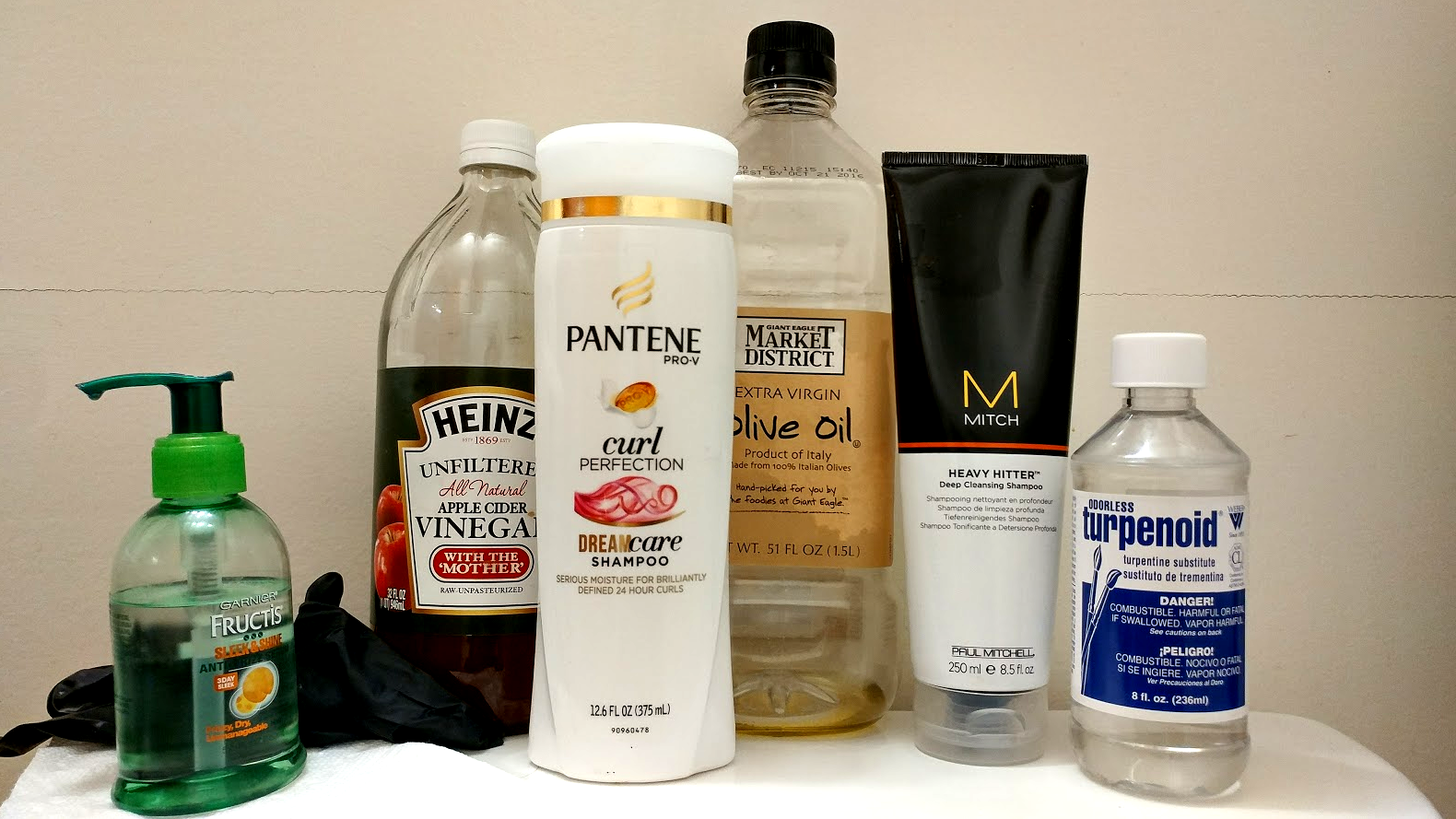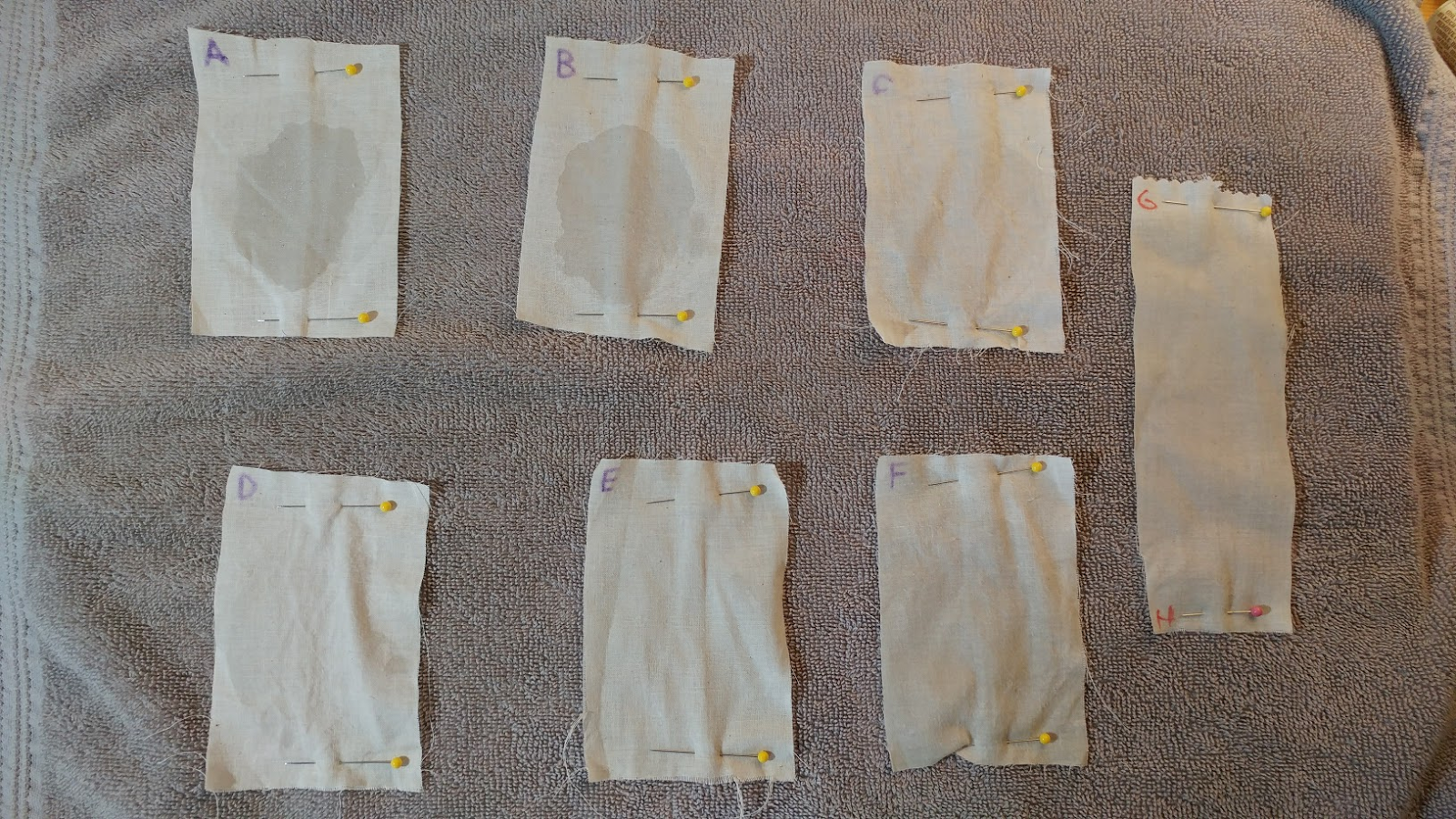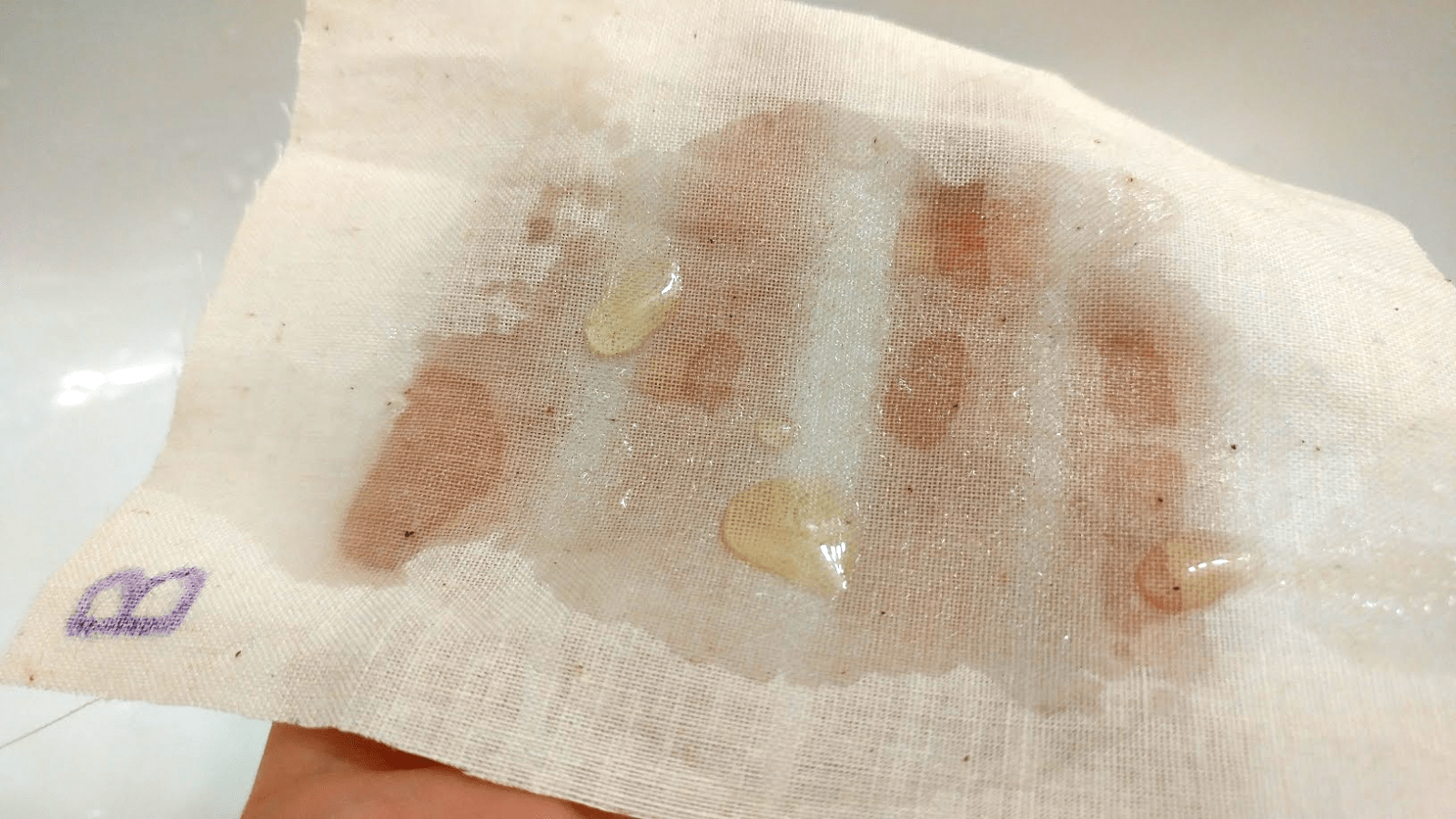When my hair gets frizzy, a good silicone serum is like magic. You just rub a drop on your hands, pat your hair all over, and your hair looks like a million bucks. But then you have to wash your hands afterwards, which sometimes feels impossible. Silicone just does not wash out like other hair products.
It was way worse than this, at first.
So the anti-frizz serum sits on a shelf in my bathroom, mostly unused. A few days ago, my four-year-old found it.
“What’s that in your hair?” I asked. The front of his head was all wet, shiny curls. “I washed it!” he said. With what? “Hair soap!”
Our hand soap is in a green container with a pump top. The anti-frizz serum is also in a green container with a pump top. Four-year-olds have a vague idea that hand soap is not for hair, but they also cannot read words like “serum” or “shampoo”.
I asked my Facebook friends what gets silicone out of hair. Surely someone would know. Apple cider vinegar was the first answer, and the second, and made several more appearances as the day went on. I had my doubts, since silicone is not water soluble. Clarifying shampoo was another popular recommendation, but is there really a difference between clarifying shampoo and regular shampoo?
Crowdsourcing would not solve my problem. I needed to use science.
The Contenders

With the anti-frizz serum sitting there looking smug.
I gathered a list of allegedly silicone-removing substances, and sent them to cosmetic chemist Randy Schueller of the Beauty Brains blog and podcast. He spent decades developing and testing hair products, and was happy to talk silicones. He didn’t have good news about my list, though. “Most of those things are going to be a waste of time.”
Before getting into the details, he pointed out that not all silicones are alike. My serum, Garnier Fructis Sleek & Shine, had cyclopentasiloxane as its first ingredient. That one actually evaporates into the air, he said. The second ingredient was dimethiconol, which is a little bit water soluble. Since I wasn’t dealing with dimethicone, the least soluble of the bunch, my chances were pretty good.
I remembered, then, why I had settled on the Garnier serum. It does wash off my hands with a little effort. I’d tried other serums in the past that were much worse; there’s a good chance they contained dimethicone.
Here’s what Schueller said about my lineup:
- Vinegar, apple cider or otherwise: Not helpful, unless it’s 100 per cent glacial acetic acid. That’s a thing a chemist might encounter in the lab, but you will not find it in your kitchen, nor should you get it anywhere near your skin if you do. Vinegar is a solid nope.
- Bicarbonate of soda: Also useless.
- Olive oil, peanut butter and other oily kitchen substances: Not likely to help. Natural oils don’t mix well with silicones.
- Mineral spirits: “Now that would actually work,” he said, but pointed out that it’s not really safe to put on your skin. This one is on my list because it’s the main ingredient in silicone caulk removers. It would be fine for that, or for fabrics, he said — just don’t soak your clothes in this flammable liquid and then throw them in your gas dryer.
- Clarifying shampoo: This was my best bet, he said. Clarifying shampoos are different from other shampoos in two ways: They don’t contain any silicones of their own; and they have a greater concentration of surfactants, the ingredients that do the cleaning.
- Dishwashing liquid: This would work for the same reason — it’s a strong cleaner.
In a blow to science, I noticed that by the end of the day, my kid’s hair was no longer goopy. That must be the cyclopentasiloxane evaporating, like Schueller said it would. I still wanted to test the different cleaners, though, so I devised an experiment.
The Experiment

I pinned them down so I could blow-dry them after washing.
I smeared samples of the anti-frizz serum onto swatches of undyed cotton fabric. There was no way to double-blind the samples, since I would know which technique I was using on each swatch, but I labelled them with letters so I could bring them to an unbiased judge.
I tried vinegar, which beaded up on the silicone-coated fabric. Since you can waterproof fabrics by spraying silicone on them, this was no surprise. Next came Pantene shampoo, a non-clarifying type that had dimethicone in its ingredients list. I lathered, rinsed and repeated, and the fabric felt fairly clean. I also tried a clarifying shampoo, Mitch Heavy Hitter, which felt like it worked pretty well.

Vinegar dances on the silicone smear, to the tune of “Can’t Touch This”
Next came the mineral spirits and olive oil, and here is where I hit a snag in the experiment. I didn’t want to leave the fabric oily, but if I washed the oil out with soap, maybe it was really the soap that was doing the job? I prepared some more swatches and tried it both ways.
Finally, I blow-dried the swatches and called in an unbiased observer (my husband) to tell me which samples were cleanest. Here is how he ordered them, from most goop residue to least:
- A, the control (not washed at all).
- B, the vinegar.
- G, the olive oil that had not been washed out. He said this was obviously cleaner than sample B.
- F, the olive oil that I had washed with hand soap.
- H, the mineral spirits, not washed. All of these so far didn’t look very clean, he said.
- C, Pantene shampoo.
- D, clarifying shampoo.
- E, mineral spirits, washed out with soap. These last three were all pretty similar, my judge remarked.
Imagine that — the chemicals did exactly what the chemist predicted. I feel like clarifying shampoo is the real winner here, because even if I didn’t have to worry about the safety profile of mineral spirits — say I’m washing silicone out of bed sheets — I would have to follow them up with soap to get that best-in-show result. In that case, it would make more sense to just use a clarifying shampoo in the first place.

Comments